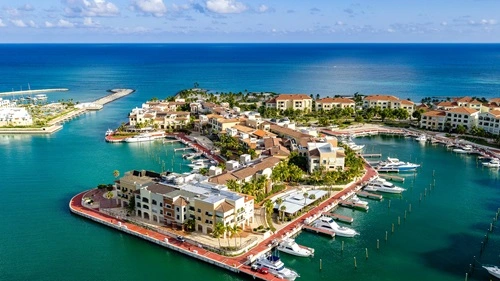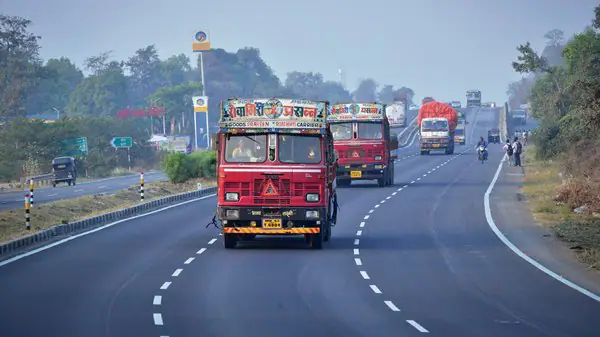The Dominican Republic is a Caribbean paradise that offers a blend of stunning beaches, rich history, and vibrant culture. Known for its friendly locals, incredible natural landscapes, and music-filled streets, the Dominican Republic has become a top destination for travelers seeking beauty and adventure. But beyond its picturesque beaches, the country has some fascinating and fun facts that make it truly unique. Here are over ten interesting facts about the Dominican Republic that reveal the spirit, culture, and natural beauty of this Caribbean gem.

1. The Dominican Republic Was the First European Settlement in the Americas
The Dominican Republic holds the title of being the first permanent European settlement in the Americas. Christopher Columbus landed on the island of Hispaniola in 1492, and in 1496, his brother Bartholomew Columbus established the city of Santo Domingo. Today, Santo Domingo is the Dominican Republic’s capital and home to a wealth of colonial history, including the first cathedral, university, and hospital in the New World. The Colonial Zone in Santo Domingo is a UNESCO World Heritage Site, showcasing beautifully preserved historic buildings.
2. It Shares an Island with Haiti
The Dominican Republic shares the island of Hispaniola with Haiti, making it one of only two Caribbean countries that share an island (the other is Saint Martin/Sint Maarten). Hispaniola is the second-largest island in the Caribbean after Cuba, and the border between the Dominican Republic and Haiti divides the island into two distinct nations with unique languages, cultures, and traditions. Despite their differences, the two countries share a rich history and a deep-rooted connection to the island.
3. Merengue and Bachata Were Born Here
The Dominican Republic is the birthplace of merengue and bachata, two of the most popular music genres in Latin America. Merengue, a lively and upbeat genre, is often considered the national music of the Dominican Republic and is celebrated with an annual Merengue Festival in Santo Domingo. Bachata, on the other hand, is a more romantic style that originated in rural areas and has recently gained worldwide popularity. Dominicans take great pride in these genres, which are integral to their cultural identity and social life.
4. The Country Has a Diverse Landscape
While the Dominican Republic is famous for its beaches, it offers much more than sand and sea. The country has one of the most diverse landscapes in the Caribbean, including rainforests, mountains, desert regions, and coastal plains. Pico Duarte, the highest peak in the Caribbean at 10,164 feet, is located in the Dominican Republic, providing visitors with incredible hiking and breathtaking views. In addition to mountains, the country has lakes, waterfalls, and rivers, offering endless opportunities for adventure and exploration.
5. Baseball Is a National Passion
Baseball is more than just a sport in the Dominican Republic—it’s a way of life. The country has produced some of the biggest stars in Major League Baseball (MLB), including David Ortiz, Pedro Martínez, and Juan Marichal. Dominican baseball players are highly respected in the sport, and the country has one of the highest numbers of MLB players per capita in the world. The Dominican Winter League is an exciting event, where top players return to their home country to play in front of enthusiastic fans.
6. The Dominican Republic Has a Unique Climate Range
Unlike most Caribbean countries, the Dominican Republic experiences a range of climates across different regions. The coastal areas are typically warm and tropical, with sunny beach weather almost year-round, while the mountainous regions can be significantly cooler. In fact, temperatures on Pico Duarte can drop to near freezing during winter months. This variety of climates allows the Dominican Republic to grow an array of crops and gives travelers the chance to enjoy both tropical and cooler environments.
7. Home to the Caribbean’s Largest Saltwater Lake
Lago Enriquillo, the largest saltwater lake in the Caribbean, is located in the southwestern part of the Dominican Republic. This lake lies below sea level and is home to unique wildlife, including American crocodiles and flamingos. Due to its high salt content, the lake creates a striking landscape, with desert-like surroundings and eerie rock formations. Lago Enriquillo is a popular spot for eco-tourism and offers a stark contrast to the lush greenery found elsewhere on the island.
8. Coffee and Cocoa Are Major Exports
The Dominican Republic is one of the leading producers of coffee and cocoa in the Caribbean, and both are important exports. Dominican coffee is known for its rich, bold flavor, and cocoa from the island is recognized for its high quality, often used in fine chocolate production. Visitors can tour coffee and cocoa plantations, learn about the cultivation process, and taste fresh, locally grown products. The country’s coffee and cocoa industries provide livelihoods for many Dominican farmers and are a source of pride.
9. Carnival Celebrations Are a Highlight of Dominican Culture
Carnival is a major celebration in the Dominican Republic, held every February, with each region showcasing unique traditions and colorful costumes. The largest and most famous carnival is in La Vega, known for its elaborate masks and vibrant parades. During Carnival, Dominicans dress in costumes representing different cultural symbols, dance to merengue and bachata, and participate in street parties. Carnival is one of the best times to experience Dominican culture, as it reflects the nation’s spirit, creativity, and love of life.
10. The Dominican Republic Is a Leading Tourist Destination in the Caribbean
The Dominican Republic is one of the most popular tourist destinations in the Caribbean, attracting millions of visitors each year. Its beautiful beaches, luxury resorts, rich history, and lively culture make it a top choice for travelers. Areas like Punta Cana, Puerto Plata, and La Romana are known for their stunning resorts and white sand beaches, while Santo Domingo offers a more historical experience. Tourism is a vital part of the Dominican economy, and the country continues to invest in developing attractions and facilities for visitors.
11. The Country Has the Oldest Cathedral in the Americas
The Cathedral of Santa María la Menor in Santo Domingo, built in 1512, holds the title of the oldest cathedral in the Americas. This stunning Gothic-style structure is located in the heart of the Colonial Zone and is a significant historical and religious landmark. The cathedral’s architecture and historical significance make it a popular destination for tourists, and it remains an active place of worship for Dominicans, providing a glimpse into the island’s deep-rooted Catholic heritage.
12. The Samaná Peninsula Has One of the Best Whale-Watching Spots
Each year, humpback whales migrate to the warm waters of Samaná Bay in the Dominican Republic to mate and give birth. From January to March, visitors can witness these magnificent creatures up close during whale-watching tours. The Samaná Peninsula is one of the top whale-watching spots in the Caribbean, drawing thousands of tourists who come to see the whales breaching, swimming, and socializing. The sight of these giants in their natural habitat is a breathtaking experience for nature lovers.
13. Dominicans Are Known for Their Hospitality
Dominicans are famous for their warmth and hospitality, which makes visitors feel welcome and at home. Known as “the land of the smiling people,” the Dominican Republic is filled with friendly locals who are proud of their culture and eager to share it with others. Whether it’s a casual conversation, a dance, or an invitation to enjoy local food, Dominicans embody the island’s lively and openhearted spirit.
14. The Dominican Republic Has the Highest Number of Protected Areas in the Caribbean
With over 30 national parks and protected areas, the Dominican Republic has the highest number of protected areas in the Caribbean. These reserves preserve the island’s diverse ecosystems, including rainforests, coastal mangroves, and coral reefs. The national parks, such as Los Haitises and Jaragua National Park, provide habitats for a variety of wildlife and offer incredible eco-tourism opportunities, from hiking and kayaking to birdwatching.
Conclusion
The Dominican Republic is a country of rich cultural heritage, stunning natural beauty, and welcoming people. From the birthplace of merengue and bachata to its historical landmarks, breathtaking landscapes, and lively festivals, the Dominican Republic has something for every traveler. Whether you’re exploring the colonial streets of Santo Domingo, relaxing on the beaches of Punta Cana, or hiking in the mountains, the Dominican Republic’s unique blend of culture, history, and nature creates an unforgettable experience. Each of these fun facts highlights the vibrancy, charm, and spirit of this Caribbean gem, making it a destination worth exploring.


